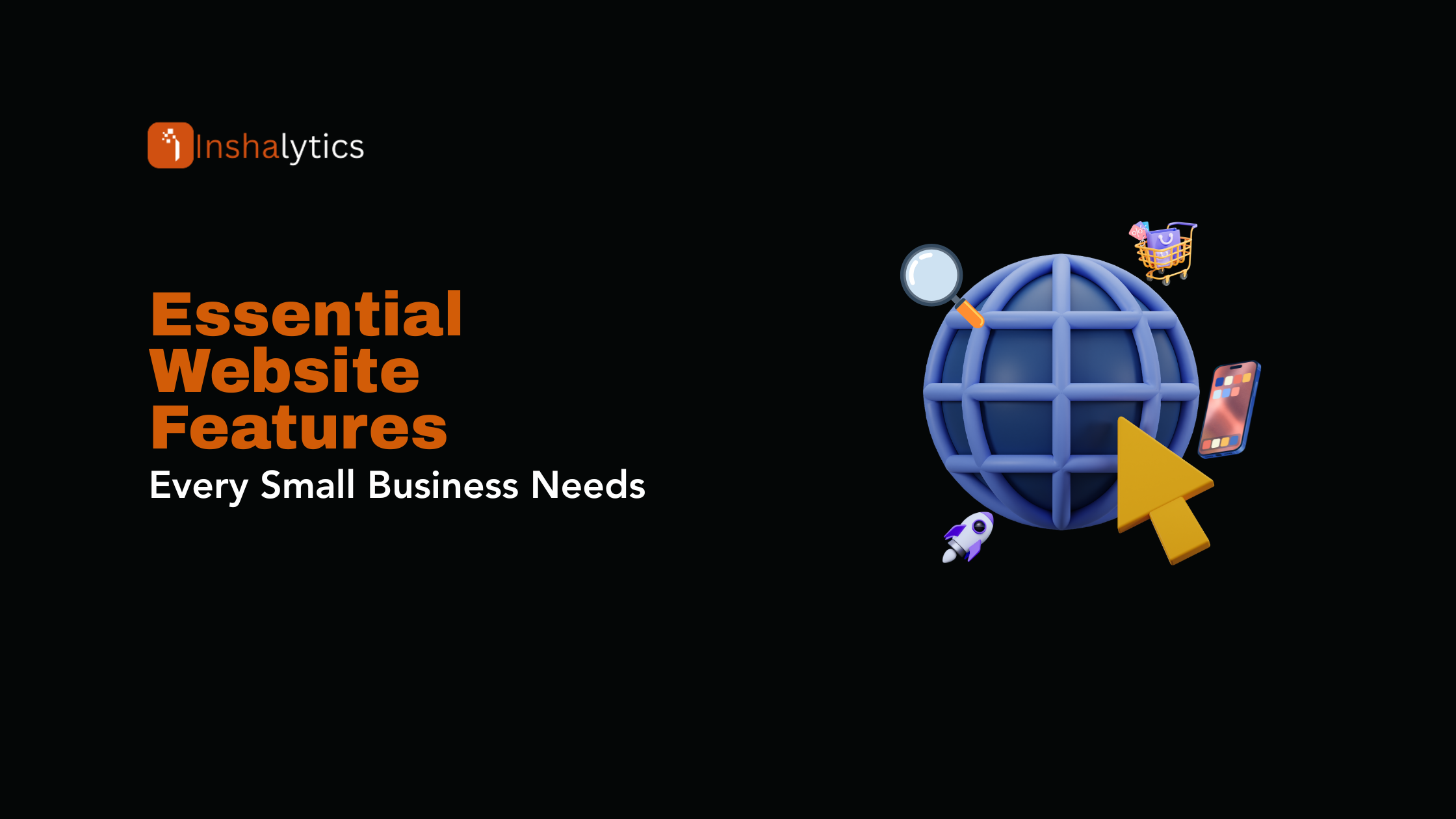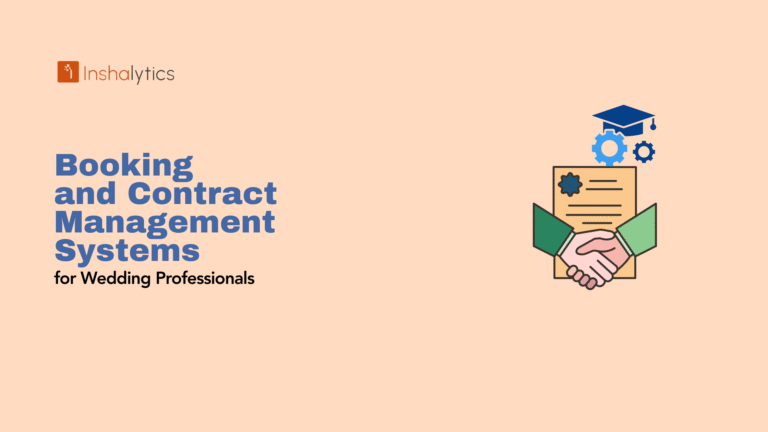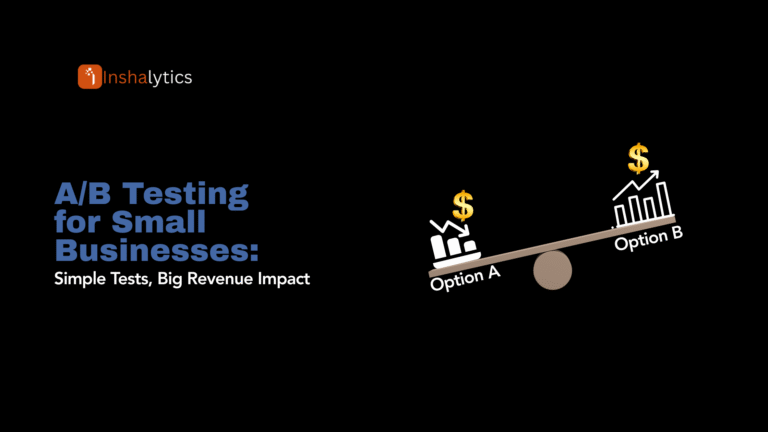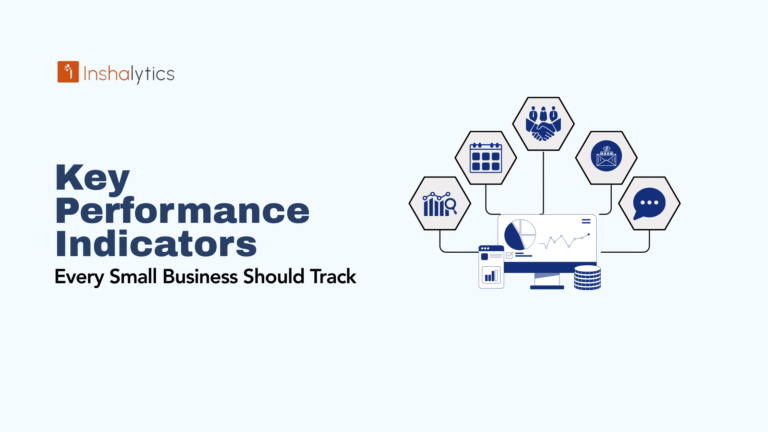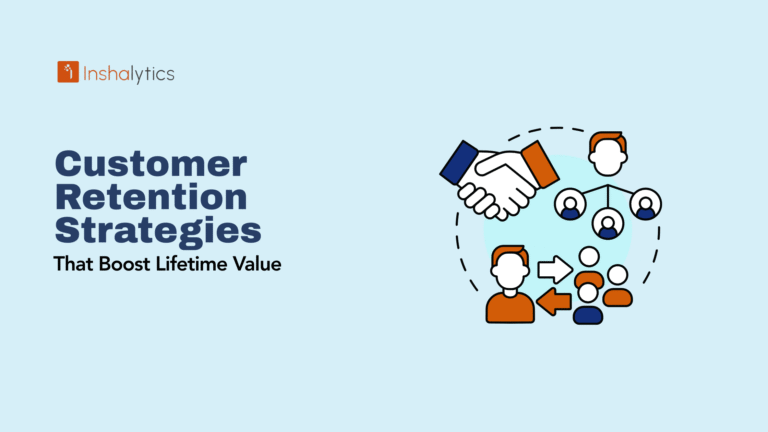A potential customer discovers your business at 11 PM on their phone while scrolling through social media. They tap your link, wait 5 seconds for your site to load, squint at tiny text, give up, and buy from your competitor instead. That lost sale? It could have been prevented with the right website features.
In 2025, your website isn’t just a digital business card it’s your most powerful sales tool, working 24/7 to attract, engage, and convert customers. With 97% of consumers searching online for local businesses and AI-powered search changing how people find information, having the right website features has never been more critical.
Why Your Website Must Evolve in 2025?
Your small business website needs to work harder than ever before. Search engines now use artificial intelligence to understand and rank content, while customers expect instant, personalized experiences across all devices. The websites that succeed in 2025 combine traditional SEO best practices with emerging technologies and user expectations.
The ten features outlined in this guide represent the essential building blocks every small business website needs to compete effectively, convert visitors into customers, and grow your business online.
1. Mobile-First Responsive Design
Mobile-first responsive design ensures your website looks and functions perfectly on smartphones, tablets, and desktops. With over 60% of web traffic coming from mobile devices, this isn’t optional it’s survival.
What Mobile-First Design Means for Small Businesses?
Mobile-first design starts with the smartphone experience and scales up to larger screens. This approach ensures your most important content and calls-to-action are prominently displayed where mobile users can easily access them.
Key mobile-first elements include:
- Touch-friendly buttons and navigation
- Readable text without zooming
- Fast-loading images optimized for mobile
- Simplified menus and streamlined content
- Thumb-friendly interface design
How to Test Your Website’s Mobile Performance?
Test your website’s mobile performance using these free tools:
Google Mobile-Friendly Test: Enter your URL to see how Google views your mobile site and get specific improvement recommendations.
Chrome DevTools: Press F12 in Chrome, click the device icon, and view your site on different screen sizes to identify layout issues.
Real Device Testing: Check your website on actual smartphones and tablets used by your customers.
Tools for Creating Mobile-Responsive Websites
Popular website builders with excellent mobile optimization include:
- WordPress with responsive themes
- Squarespace (automatically mobile-optimized)
- Wix (mobile editor included)
- Shopify (built-in responsive design)
2. Fast Loading Speed (Under 3 Seconds)
Website loading speed directly impacts both user experience and search engine rankings. Google prioritizes fast-loading websites, and users abandon sites that take longer than 3 seconds to load.
Core Web Vitals and Page Speed Requirements
Google’s Core Web Vitals measure three key aspects of loading performance:
Largest Contentful Paint (LCP): How quickly your main content loads (should be under 2.5 seconds)
First Input Delay (FID): How quickly your site responds to user interactions (should be under 100 milliseconds)
Cumulative Layout Shift (CLS): How stable your page layout is during loading (should be under 0.1)
Simple Ways to Improve Website Loading Times
Optimize your website speed with these actionable steps:
Image Optimization:
- Compress images using tools like TinyPNG or ImageOptim
- Use WebP format for better compression
- Implement lazy loading for images below the fold
Choose Quality Hosting:
- Upgrade from shared to VPS or dedicated hosting
- Use hosting providers with SSD storage
- Consider Content Delivery Networks (CDNs)
Minimize Code:
- Remove unnecessary plugins and widgets
- Combine CSS and JavaScript files
- Use caching plugins to serve static versions of your pages
Best Tools for Speed Testing and Optimization
Google PageSpeed Insights: Provides detailed speed analysis and specific optimization recommendations for both mobile and desktop.
GTmetrix: Offers comprehensive performance reports with waterfall charts showing exactly where delays occur.
Pingdom Website Speed Test: A Simple tool that tests loading times from multiple global locations.
3. Search Engine Optimization (SEO) Integration
Built-in SEO capabilities help your website appear in search results when potential customers look for your products or services. Effective SEO drives organic traffic without ongoing advertising costs.
Essential On-Page SEO Features for Small Business
Your website should include these fundamental SEO elements:
Title Tags and Meta Descriptions: Unique, descriptive titles and summaries for each page that include relevant keywords.
Header Structure: Proper use of H1, H2, and H3 tags to organize content and signal importance to search engines.
Internal Linking: Strategic links between your pages that help search engines understand your site structure and keep visitors engaged.
Image Alt Text: Descriptive text for images that improves accessibility and helps search engines understand visual content.
Local SEO Requirements for 2025
For businesses serving local customers, implement these local SEO features:
Google Business Profile Integration: Connect your website to your Google Business Profile to display location, hours, and reviews.
Local Schema Markup: Use structured data to provide search engines with specific information about your business location and services.
Location Pages: Create dedicated pages for each location you serve, including local keywords and relevant content.
How to Set Up Basic SEO Without Technical Skills?
Use SEO-Friendly Website Builders:
- WordPress with the Yoast SEO plugin
- Squarespace (built-in SEO tools)
- Wix SEO Wiz for guided optimization
Focus on Content Quality: Write helpful, informative content that answers your customers’ questions and solves their problems.
Research Keywords: Use free tools like Google Keyword Planner or Ubersuggest to find terms your customers actually search for.
4. Clear Navigation and User-Friendly Design
Intuitive navigation helps visitors find information quickly and reduces bounce rates. Clear, logical site structure improves both user experience and search engine crawling.
Best Practices for Website Navigation Structure
Design your navigation with these principles:
Keep It Simple: Limit main navigation to 7 items or fewer. Use clear, descriptive labels instead of creative terminology.
Implement Breadcrumb Navigation: Show users their location within your site structure, especially important for larger websites.
Include Search Functionality: Add a search bar for websites with extensive content or product catalogs.
Use Consistent Layout: Maintain the same navigation structure across all pages for a predictable user experience.
Creating Intuitive User Interfaces
Visual Hierarchy: Use font sizes, colors, and spacing to guide visitors’ attention to the most important elements.
White Space: Give content room to breathe—cluttered designs overwhelm visitors and reduce conversion rates.
Consistent Design Elements: Use the same buttons, fonts, and color schemes throughout your website for a professional appearance.
Common Navigation Mistakes to Avoid
Dropdown Menus That Are Too Complex: Limit dropdown menus to 2 levels deep and ensure they work on mobile devices.
Unclear Call-to-Action Placement: Make it obvious what action you want visitors to take on each page.
Broken Internal Links: Regularly check that all internal links work properly and lead to relevant pages.
5. Professional Contact Information and CTA Placement
Easy access to contact information builds trust and enables customer communication. Strategic call-to-action placement guides visitors toward desired actions like purchases or inquiries.
Where to Place Contact Information for Maximum Impact?
Header and Footer: Include phone number and location in your site header, with complete contact details in the footer.
Dedicated Contact Page: Create a comprehensive contact page with multiple communication options, business hours, and a location map.
Every Service Page: Include relevant contact information on pages describing your services or products.
Designing Effective Call-to-Action Buttons
Use Action-Oriented Language: “Get Free Quote,” “Schedule Consultation,” or “Buy Now” perform better than generic “Click Here.”
Make Buttons Stand Out: Use contrasting colors and adequate size (minimum 44px for mobile tapping).
Limit Options: Too many CTAs create decision paralysis. Focus on one primary action per page.
Building Trust Through Transparent Communication
Display Business Hours: Clearly show when customers can reach you and expect responses.
Include Multiple Contact Methods: Offer phone, email, and contact form options to accommodate different preferences.
Add Physical Address: Even for online-only businesses, showing a real address builds credibility.
6. Security Features and SSL Certificates
Website security protects both your business and customer data while improving search engine rankings. Google specifically favors secure websites in search results.
Why Website Security Matters for Small Businesses?
Security breaches can devastate small businesses through:
- Lost customer trust and reputation damage
- Legal liability for compromised customer data
- Search engine penalties that reduce visibility
- Potential financial losses from fraud or theft
Essential Security Features Every Website Needs
SSL Certificate (HTTPS): Encrypts data transmission between your website and visitors’ browsers. Look for the padlock icon in the address bar.
Regular Software Updates: Keep your website platform, plugins, and themes updated to patch security vulnerabilities.
Strong Password Policies: Use complex passwords and two-factor authentication for administrative accounts.
Regular Backups: Automatically back up your website content and data to recover quickly from any security incidents.
How to Obtain and Install SSL Certificates?
Free Options:
- Let’s Encrypt provides free SSL certificates
- Many hosting providers include SSL certificates
- Website builders often include SSL automatically
Installation Process:
- Purchase or obtain an SSL certificate from your hosting provider
- Install the certificate through the hosting control panel
- Update website settings to force HTTPS
- Test all pages to ensure proper implementation
7. Content Management System (CMS) Capabilities
A user-friendly content management system allows you to update your website without technical expertise. The right CMS grows with your business and adapts to changing needs.
Choosing the Right CMS for Small Business
Consider these factors when selecting a CMS:
Ease of Use: Choose platforms with intuitive interfaces that your team can learn quickly.
Customization Options: Ensure the CMS supports your design preferences and functionality requirements.
SEO Capabilities: Select systems with built-in SEO features or compatibility with SEO plugins.
Support and Community: Opt for popular platforms with strong support communities and documentation.
Must-Have CMS Features for 2025
Visual Page Builders: Drag-and-drop editors that let you create pages without coding knowledge.
Mobile Editing: Ability to update content from smartphones and tablets for quick changes.
Media Management: Organized systems for uploading, storing, and organizing images and documents.
User Role Management: Control who can edit different parts of your website with appropriate permissions.
WordPress vs. Other Popular CMS Options
WordPress: Most popular CMS with an extensive plugin ecosystem and customization options. Requires more technical knowledge but offers maximum flexibility.
Squarespace: User-friendly with beautiful design templates and integrated features. Limited customization, but easier for beginners.
Wix: Drag-and-drop interface with AI-powered design assistance. Good for simple websites, but can be limiting for complex needs.
Shopify: Specialized for e-commerce with built-in payment processing and inventory management.
8. Analytics and Performance Tracking
Website analytics provide insights into visitor behavior, helping you make data-driven improvements. Understanding your audience enables better marketing decisions and website optimization.
Setting Up Google Analytics for Small Business
Create a Google Analytics Account:
- Visit analytics.google.com and sign up
- Add your website as a new property
- Install tracking code on every page
- Verify installation and data collection
Essential Setup Steps:
- Configure goals for important actions (form submissions, purchases)
- Set up e-commerce tracking if you sell online
- Connect Google Search Console for search performance data
- Create custom dashboards for key metrics
Key Metrics Every Small Business Should Monitor
Traffic Sources: Understand where visitors come from (search engines, social media, direct visits) to focus marketing efforts effectively.
Popular Pages: Identify which content attracts and engages visitors to create similar high-performing pages.
Conversion Rates: Track how many visitors complete desired actions like filling out forms or making purchases.
User Behavior: Analyze bounce rates, time on page, and navigation patterns to improve user experience.
Using Data to Improve Website Performance
Content Optimization: Update pages with high traffic but low engagement to better serve visitor needs.
Marketing Focus: Invest more in traffic sources that bring qualified leads and customers.
Technical Improvements: Address pages with high bounce rates or slow loading times.
User Experience Enhancements: Simplify navigation paths to popular content and important conversion pages.
9. Social Media Integration
Social media integration connects your website to your social platforms, expanding reach and improving engagement. Seamless integration encourages sharing and builds community around your brand.
How to Connect Your Website to Social Platforms
Social Media Buttons: Add prominent links to your social profiles in headers, footers, and contact pages.
Social Sharing Buttons: Enable visitors to easily share your content on their preferred social networks.
Embedded Social Feeds: Display recent social media posts directly on your website to show activity and engagement.
Social Login Options: Allow visitors to create accounts or log in using existing social media profiles.
Benefits of Social Media Integration for SEO
Increased Content Distribution: Social sharing expands your content’s reach and can generate backlinks.
Enhanced Brand Signals: Active social media presence contributes to overall brand authority online.
Improved User Engagement: Social elements can increase time spent on your website and reduce bounce rates.
Local SEO Boost: Social media profiles often appear in local search results alongside your website.
Best Practices for Social Sharing Features
Strategic Button Placement: Position social sharing buttons where they’re visible but don’t interfere with content consumption.
Platform Selection: Focus on platforms where your target audience is most active rather than trying to be everywhere.
Engaging Content Creation: Develop shareable content that provides value and encourages organic social media promotion.
10. E-commerce and Online Payment Capabilities
E-commerce functionality enables online sales and provides convenient payment options for customers. Even service-based businesses benefit from online booking and payment capabilities.
When Small Businesses Need E-commerce Features?
Product Sales: Any business selling physical or digital products needs a shopping cart and checkout functionality.
Service Bookings: Service providers can benefit from online appointment scheduling with payment collection.
Membership or Subscription Services: Recurring payment processing for ongoing services or content access.
Event Registration: Collect payments for workshops, classes, or events directly through your website.
Essential Online Payment Options
Credit and Debit Cards: Accept major card brands through secure payment processors like Stripe or PayPal.
Digital Wallets: Offer Apple Pay, Google Pay, and PayPal for faster, more convenient checkout experiences.
Buy Now, Pay Later: Options like Klarna or Afterpay can increase average order values and conversion rates.
Multiple Currency Support: Accept payments in different currencies if you serve international customers.
Setting Up Simple Online Store Functionality
Choose E-commerce Platform:
- WooCommerce for WordPress websites
- Shopify for dedicated online stores
- Square Online for simple product catalogs
- BigCommerce for scaling businesses
Essential Setup Components:
- Product catalog with descriptions and images
- Shopping cart and secure checkout process
- Inventory management system
- Order processing and customer communication
- Shipping and tax calculation tools
FAQs About Small Business Websites
What website features are most important for local businesses?
Local businesses should prioritize mobile-responsive design, local SEO optimization, clear contact information, and Google Business Profile integration. Fast loading speeds and professional contact forms are also crucial for converting local searches into customers.
How much should a small business spend on website features?
Basic essential features can cost $500-2,000 for a professionally built website, or $50-200 monthly for website builder platforms. E-commerce functionality adds $30-300 monthly, depending on transaction volume and features needed.
Can I add these features to my existing website?
Most features can be added to existing websites through plugins, widgets, or platform upgrades. However, fundamental changes like mobile-responsive design might require website rebuilding for optimal results.
Which features should I prioritize first?
Start with mobile responsiveness, basic SEO, and fast loading speeds—these affect all visitors immediately. Then add clear navigation, contact information, and security features before advancing to e-commerce or advanced analytics.
How often should I update my website features?
Review and update your website features quarterly. Security updates should be applied immediately, while design and functionality improvements can be planned annually based on user feedback and analytics data.
Building Your 2025-Ready Small Business Website
Success in 2025 requires websites that excel in both traditional search rankings and AI-powered search results. The ten essential features covered in this guide mobile-first design, fast loading speeds, SEO integration, clear navigation, professional contact options, security features, content management capabilities, analytics tracking, social media integration, and e-commerce functionality form the foundation of effective small business websites.
Key Takeaways:
- Mobile-first design is non-negotiable with 60%+ mobile traffic
- Loading speeds under 3 seconds improve both SEO and conversions
- Clear, structured content helps both humans and AI understand your offerings
- Security and professionalism build essential customer trust
- Analytics provide actionable insights for continuous improvement
Next Steps:
- Audit your current website against this checklist
- Prioritize missing features based on your business needs
- Choose appropriate tools and platforms for implementation
- Monitor performance and iterate based on user feedback
Your website is your most valuable marketing asset. Investing in these essential features positions your small business for sustained growth and success in an increasingly competitive digital landscape.
Resources and Tools
Recommended Website Builders for Small Business
All-in-One Solutions:
- Squarespace: Best for design-focused businesses
- Wix: Most user-friendly with AI assistance
- WordPress.com: Balanced flexibility and ease of use
E-commerce Focused:
- Shopify: Leading e-commerce platform
- BigCommerce: Scalable online store solution
- WooCommerce: WordPress e-commerce plugin
Free Tools for Website Optimization
Performance Testing:
- Google PageSpeed Insights
- GTmetrix
- Pingdom Website Speed Test
SEO Analysis:
- Google Search Console
- Ubersuggest
- Yoast SEO (WordPress plugin)
Analytics:
- Google Analytics 4
- Google Business Profile
- Facebook Business Manager
Where to Get Professional Help
Freelance Platforms:
- Upwork for specialized website developers
- Fiverr for budget-friendly design services
- 99designs for professional design contests
Local Resources:
- Small business development centers
- Chamber of commerce referrals
- Local web design agencies with a small business focus
